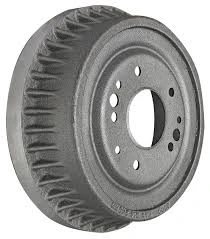drum brake pressure
Understanding Drum Brake Pressure Importance and Functionality
Drum brakes are a crucial component of many vehicles' braking systems, playing a significant role in ensuring safety and effective stopping. One of the key elements that determine the efficiency of drum brakes is the pressure exerted during braking. Understanding drum brake pressure not only sheds light on the braking mechanism but also helps in maintenance and improvement of vehicle performance.
At the heart of a drum brake system is the brake drum, which houses brake shoes that expand against the inner surface to create friction and stop the vehicle. The pressure applied to these brake shoes is essential for generating the friction required to slow down or halt the vehicle's motion. This pressure is typically achieved through hydraulic cylinders that transfer force from the brake pedal. When the driver presses the brake pedal, hydraulic fluid is forced into the brake lines, which, in turn, pushes the pistons in the brake drum. This action extends the brake shoes outward, pressing them against the drum and allowing for effective braking.
The amount of brake pressure needed can vary significantly based on several factors, including vehicle weight, speed, road conditions, and the design of the braking system itself
. To optimize braking efficiency, it is essential for the drum brake pressure to be sufficient but not excessive. Too little pressure may result in prolonged stopping distances, while too much pressure can lead to brake lock-up, causing skidding and loss of control.drum brake pressure

One key aspect of managing drum brake pressure is ensuring that the hydraulics are functioning correctly. A leak in the hydraulic system can lead to reduced brake pressure, which can compromise stopping power. Regular inspection and maintenance of brake components, including checking the integrity of brake lines and the condition of the hydraulic fluid, are vital for sustaining proper pressure levels.
Moreover, the design of the brake shoes and the drum can influence how pressure is applied. The friction material on the brake shoes, combined with the surface condition of the drum, affects the effectiveness of the brakes. For instance, worn-out brake shoes or a scored drum surface can lead to uneven pressure distribution, resulting in reduced braking performance and increased wear.
Another factor to consider is the ambient conditions. In wet or icy conditions, the required drum brake pressure may change due to reduced friction between the drum and brake shoes. Drivers should be aware that they may need to apply more pressure in adverse conditions to achieve the same stopping power they would under ideal conditions.
In conclusion, drum brake pressure is a critical aspect of vehicle safety and performance. Understanding how this pressure works within the braking system helps drivers appreciate the engineering behind their vehicles and the importance of proper maintenance. Regular checks of the hydraulic system, brake components, and awareness of driving conditions can ensure that drum brakes operate efficiently, providing reliable stopping power when it matters most. As we continue to advance in automotive technology, maintaining an understanding of fundamental concepts like drum brake pressure remains essential for safe and effective driving.
-
Truck Drum Brake Spring Replacement ProcedureNewsAug.22,2025
-
Evolution Of Brake Drum Function Designs In Automotive HistoryNewsAug.22,2025
-
Drum Brake Motor Thermal Management SolutionsNewsAug.22,2025
-
Essential tools for brakes and drums repair jobsNewsAug.22,2025
-
Trailer Drum Brake Self-Adjusting Mechanisms ExplainedNewsAug.22,2025
-
Brake Drum Types in Vintage Auto RestorationNewsAug.22,2025
-
Rear Drum Brakes Maintenance TipsNewsAug.04,2025


